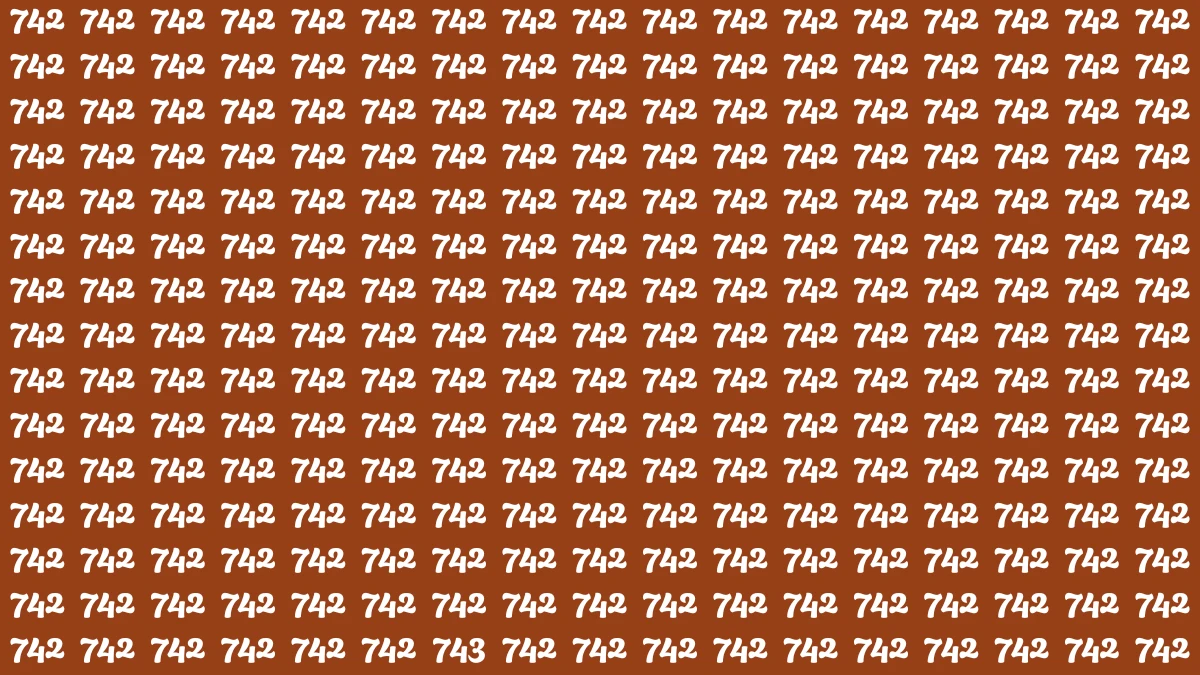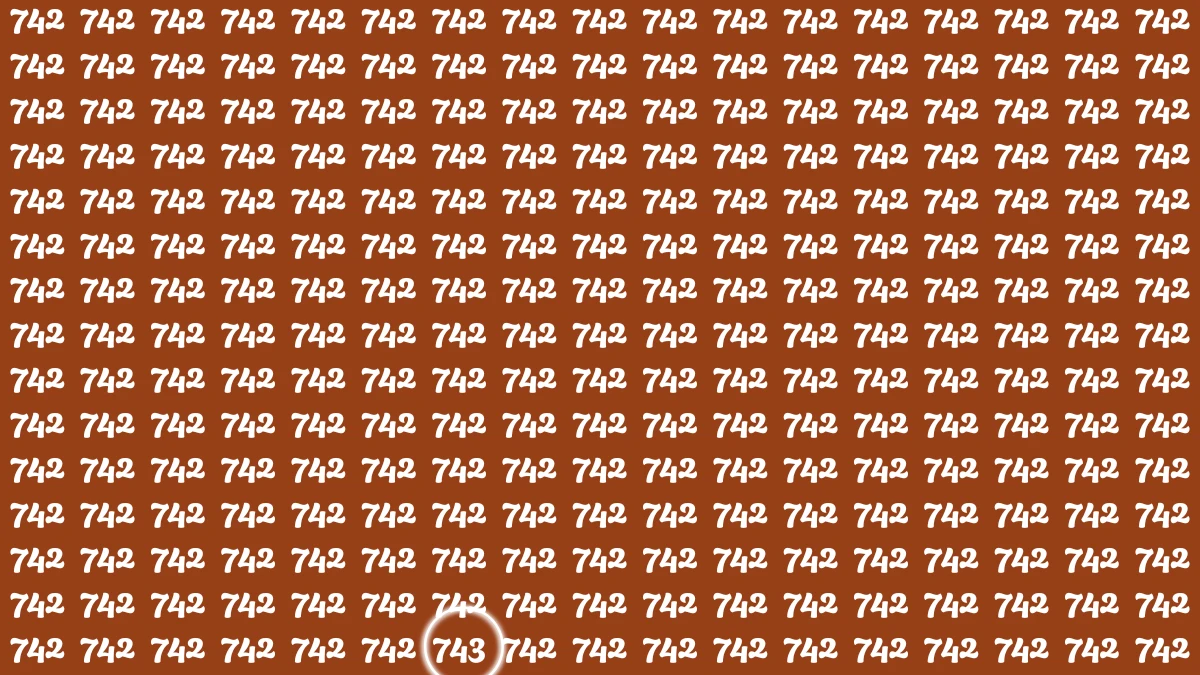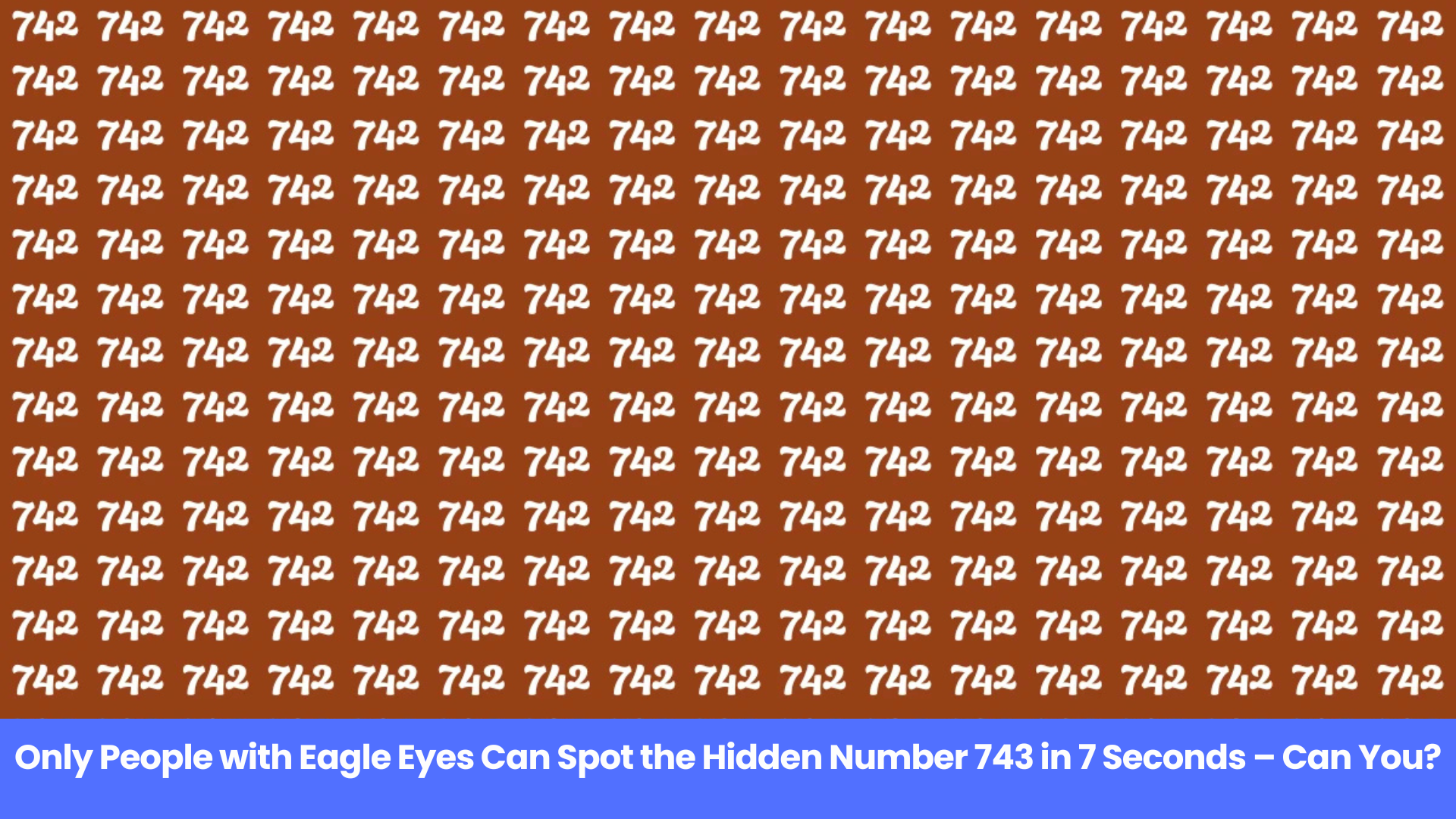Are you ready for a fun eye test that’s taking the internet by storm? The Optical Illusion 7 Seconds Challenge is here — and only people with truly sharp eyes can ace it! Your task is simple: find the number 743 hidden among a bunch of 742s in just 7 seconds. Sounds easy, right? Well, thousands have already tried, and only a few have succeeded.
This visual puzzle has gone viral across social media platforms like Instagram, X (formerly Twitter), and Facebook, where users are competing to prove how sharp their eyes really are. But behind the fun lies a surprising test of how our brain processes visual information.
What Makes This Challenge So Popular?
At first glance, this might seem like a simple number game — just find one different number among hundreds that look almost the same. But this is exactly what makes optical illusions so fascinating.
In this particular puzzle, the image is filled with repeating 742s, arranged closely together. Hidden somewhere in that grid is a single 743, camouflaged so perfectly that it blends in unless you’re really paying attention.
The challenge: Spot 743 within 7 seconds!
It may sound straightforward, but the time pressure and number pattern make it surprisingly tricky. It’s not just about your eyesight; it’s about how quickly your brain recognizes patterns and differences under stress.
Why Optical Illusions Are More Than Just Fun
Optical illusions like this one aren’t just viral trends—they also tell us a lot about how our eyes and brain work together. When you look at the image, your eyes send information to your brain, which then interprets what you see. But when patterns repeat too closely, your brain tends to “fill in” details automatically, often missing subtle differences.
That’s why even people with good eyesight can struggle to find the hidden number. Your mind gets tricked by the repetition.
It’s a fascinating peek into visual processing and attention to detail — skills that are useful in everyday life, from driving to reading to problem-solving.
Can You Spot It in 7 Seconds?

Here’s how to test yourself:
- Set a timer for 7 seconds.
- Look closely at the grid of numbers.
- Try to find 743 hidden among all the 742s before the timer runs out.
If you manage to spot it within the time limit — congratulations! You’ve got eagle eyes and a quick brain. If not, don’t worry — very few people get it right the first time.
Most users report finding it only after 10–15 seconds once they start scanning line by line. It’s a lot trickier than it looks!
Why Your Brain Struggles With This Type of Puzzle
Here’s the science behind it. Our brains are wired to recognize familiar patterns quickly — a skill that helps us make sense of the world efficiently. But in this case, that same skill becomes a disadvantage. Since the numbers 742 are repeated, your brain assumes the next number will also be 742, automatically “ignoring” small variations like 743.
This phenomenon is called “pattern blindness” or inattentional blindness, and it explains why we sometimes miss obvious details when focusing too hard on a repetitive task.
It’s the same reason you might not notice a small typo in a paragraph you’ve read multiple times — your brain fills in what it expects to see.
How to Improve Your Visual Focus
If you couldn’t spot the number 743 in time, don’t feel bad — this challenge is actually a great exercise for your brain. Here are a few fun ways to improve your focus and attention to detail:
- 🧠 Play more visual puzzles: Games like Sudoku, word searches, or “spot the difference” pictures strengthen pattern recognition.
- 👀 Practice mindfulness: Staying calm and focused helps your brain notice details more clearly.
- 📵 Avoid multitasking: The more you train your brain to focus on one thing, the better it becomes at spotting small differences.
- 🕹️ Try eye-tracking exercises: Following moving dots or reading fine text can boost your visual sharpness.
These small habits can make you more alert, focused, and observant in daily life.
The Solution to the Challenge

So, where was the number 743 hiding?
If you carefully look near the bottom left corner of the puzzle, you’ll spot the unique number standing out among all the 742s.
Once you see it, you’ll wonder how you missed it earlier! That’s the beauty of optical illusions — they remind us that our eyes and brain don’t always work in perfect sync.
This little number game is more than just a pastime; it’s a gentle nudge to slow down, observe carefully, and test your limits.
Why People Love These Brain Teasers
India, like the rest of the world, has fallen in love with these short, interactive “spot the number” challenges. They’re easy to share, fun to try, and instantly rewarding.
On platforms like Instagram Reels and YouTube Shorts, creators are turning such challenges into viral hits — adding timers, background music, and dramatic reveals to make them even more exciting.
For many, these optical illusions are a quick mental break during a busy day. They don’t just entertain — they boost cognitive alertness and help improve memory and reaction speed over time.
Final Thoughts: Are You One of the Sharpest Eyes?
The Optical Illusion 7 Seconds Challenge might look simple, but it’s one of the most effective ways to test how observant you really are.
If you spotted the 743 within 7 seconds, your visual processing skills are top-notch! And even if you didn’t, it’s still a great mental exercise that improves focus and pattern recognition.
So next time you come across an optical illusion online, don’t scroll past it — take a few seconds to challenge yourself. You might be surprised by what your brain can do when it slows down and pays attention.

